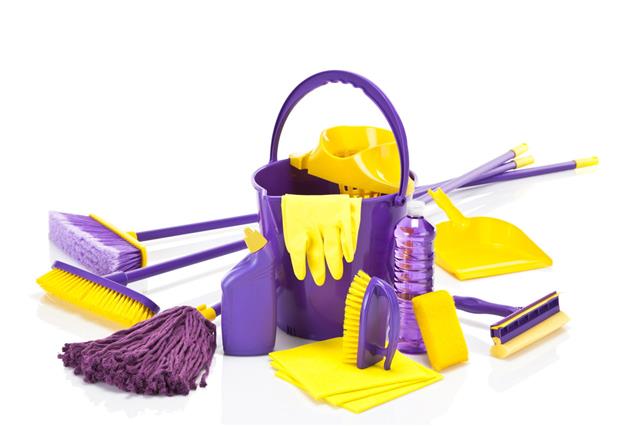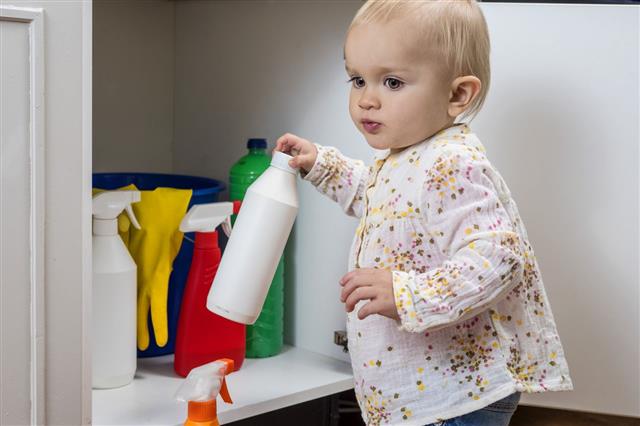
How helpful is bleach in killing black mold? Most are not sure about the answer. This post helps you understand if bleach is really effective in killing black mold.
Black mold infestation can be a bane on the lives of most people, especially those who happen to live in moist and humid climates. This slimy, greenish-black substance can be found growing in areas which harbor dampness and moisture. These might include ceiling tiles, bathroom tiles, shower heads, sink, basement, and damped wood to name a few. It is also not surprising to see it growing on clothes made of cotton, or leather goods. It is not the unsightly appearance of the black mold that is a matter of concern, but the several unpleasant symptoms which occur because of the exposure to the mold. What makes black mold toxic is its byproduct called mycotoxins. These substances are so small in size that they can get airborne, and make their way into humans and pets, giving rise to bouts of medical problems. One of the accepted and popular methods to abate black mold has been the use of the household chlorine bleach. But does bleach actually help in killing these toxic fungi? Let us know about it as we continue to read further.
How Helpful is Bleach in Killing Black Mold?
When it comes to sanitizing or disinfecting surfaces, bleach undoubtedly is an effective product to use. The substance being a powerful oxidizer, works well in getting rid of certain types of bacteria. However, if we are speaking of getting rid of black mold, then what most experts have commented may raise your eyebrows in disbelief. According to them, bleach is only helpful in killing mold that is growing on materials such as bathroom tiles, bathtubs, glass, and counter-tops.
This is because these are all non-porous surfaces. Bleach does not come in handy for surfaces that are porous.
So what stops bleach from removing mold from porous surfaces like drywall or wood? When black mold infests such areas, it not only grows on but beneath the surface too, with its roots intact. And this is what limits the efficacy of bleach, as it cannot penetrate the surface. This causes the chlorine to stay on the surface, and it is the water that gets absorbed thus, feeding the black mold spores to become worse. Some of the mold may be removed from the surface, but since its roots still remain embedded, it returns within a few days. Bleach also gets rid of the moldy color from the infested surface, and this puts most people under the impression that the mold is gone for good. But unfortunately, the toxic microflora still thrives.
Why Mustn’t You Use Bleach?
Although, bleach may be an effective mold removal for non-porous surfaces as described above, there are still many factors that may encourage you to go for its alternatives. The Environmental Protection Agency (EPA) does not recommend its use for mold removal because of the side effects it causes on one’s health.
◈ Bleach being a hard, corrosive chemical, may damage the surface it is used on
◈ The fumes emitted by the chemical is harsh on your lungs. Prolong inhalation can scar the esophagus lining, and lungs
◈ Contact with eyes may cause pain and irritation. If it stays for a longer time, it can also damage the eye tissues
◈ Bleach does not remove black mold or any other mold type from carpet and upholstery too
◈ Using bleach fills the area with an unpleasant, strong odor. Also, if it is combined with ammonia, it produces highly toxic gases
That would be all for my treatise on how effective is bleach in killing black mold or any mold type for that matter. Safer alternatives to this substance may include borax, vinegar, hydrogen peroxide, a simple solution of detergent and water, baking soda, and tea tree oil. These substances are natural mold removal products. Unlike bleach, they do not emit chemicals or dangerous fumes, or pose any threat to health. To add, the best measure you can take against mold growth is keeping a regular check on places which tend to remain moist or are in moist and warm areas of the house. As soon as you suspect any mold growth in them, take adequate measures to get rid of it. In some cases, the mold infestation in your house could be so gruesome that you may not have any choice but to seek professional help.













